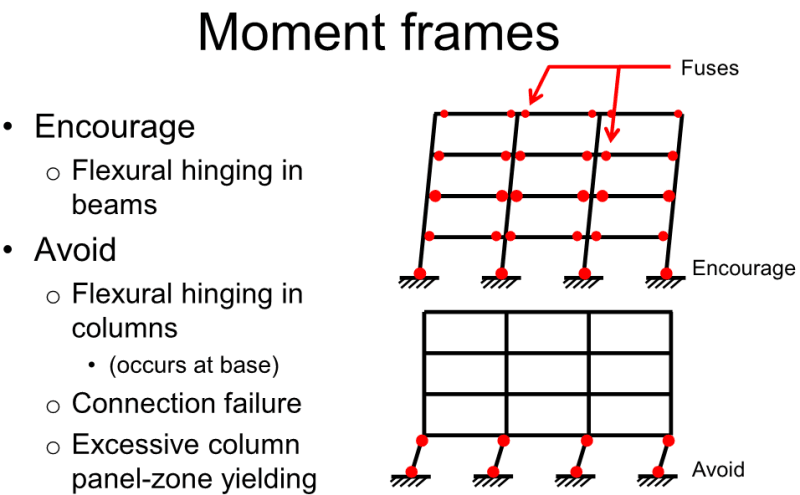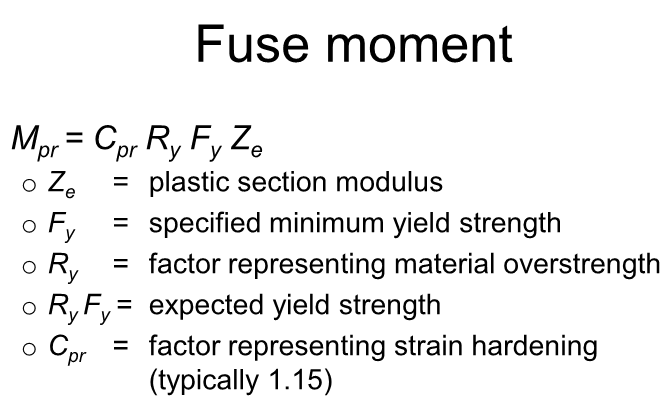I am engineering an Ordinary Moment Frame for an industrial structure in a high seismic region. The SDS for the site equals 1.0. According to AISC 341 Section 4.2(a), I have to engineer the moment connection for the expected flexural strength of the beam. This load is high, so AISC 341 Section 4.2(b) allows me to reduce the design load to the minimum of the flexural strength of the column, the corresponding moment to the web panel zone shear strength of the column, the foundation uplift moment, or the moment that would be produced by revising the analysis to include a response modification factor, R=1. I believe the reasoning for this exception is that you should not have to engineer the connection for a moment higher than what can be transferred to the connections by the system.
The design example in the code illustrates a design for which the web panel zone shear produces the lowest moment of the listed exception options. It then increases the moment for strain hardening and story shear, and proceeds to design the connection for this moment as if it were a normal end-plate moment connection. The only calculation that is omitted is the web panel zone shear. I presume this is because it will obviously fail this check. The moment utilized to engineer the connection was intentionally larger than the moment that would cause a web panel zone shear failure. The purpose of designing for the web panel zone shear load was to make sure the column had a ductile failure, and testing has shown web panel zone shear will meet this requirement.
For my design, I checked all of the possible options shown in Section 4.2(b). The minimum controlling moment is produced by the R=1 system. When I run my calculations with this moment, I get a web panel zone shear failure that would require doubler plates. This originally appeared counter-intuitive because if web panel zone shear was going to fail, why was the moment calculated for this failure in the first step higher than the R=1 system. After looking further into the calculations, it is because the controlling design moments are calculated prior to applying the omega factor. Now the question I have is do I really need to add doubler plates to prevent this failure? Both the verbiage and the design example in the code appear to illustrate that a web panel zone shear failure is acceptable.
The design example in the code illustrates a design for which the web panel zone shear produces the lowest moment of the listed exception options. It then increases the moment for strain hardening and story shear, and proceeds to design the connection for this moment as if it were a normal end-plate moment connection. The only calculation that is omitted is the web panel zone shear. I presume this is because it will obviously fail this check. The moment utilized to engineer the connection was intentionally larger than the moment that would cause a web panel zone shear failure. The purpose of designing for the web panel zone shear load was to make sure the column had a ductile failure, and testing has shown web panel zone shear will meet this requirement.
For my design, I checked all of the possible options shown in Section 4.2(b). The minimum controlling moment is produced by the R=1 system. When I run my calculations with this moment, I get a web panel zone shear failure that would require doubler plates. This originally appeared counter-intuitive because if web panel zone shear was going to fail, why was the moment calculated for this failure in the first step higher than the R=1 system. After looking further into the calculations, it is because the controlling design moments are calculated prior to applying the omega factor. Now the question I have is do I really need to add doubler plates to prevent this failure? Both the verbiage and the design example in the code appear to illustrate that a web panel zone shear failure is acceptable.



